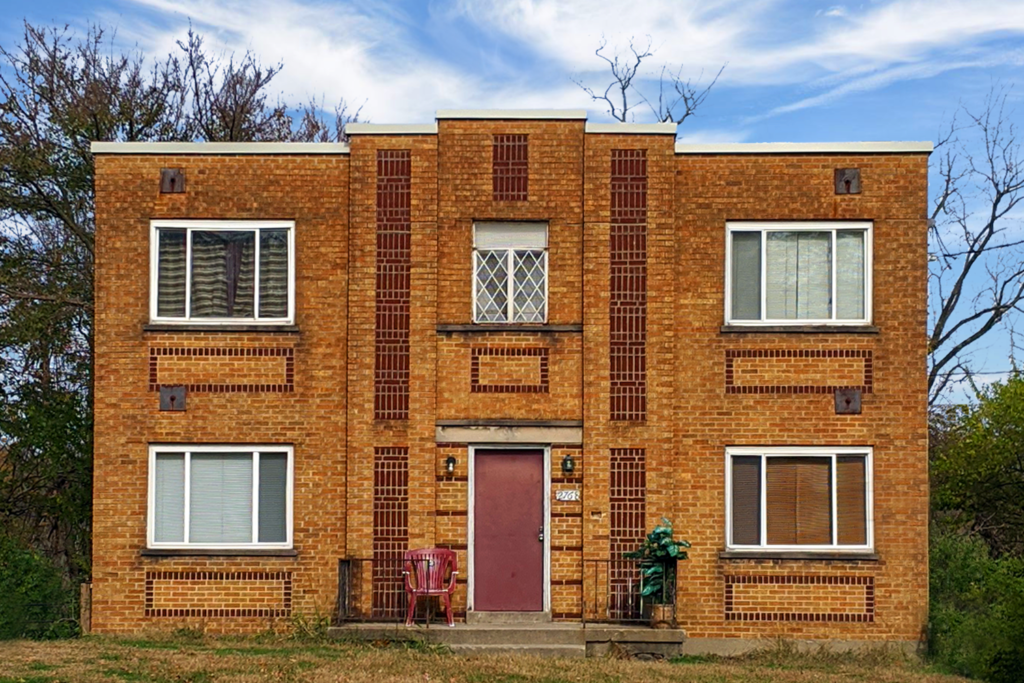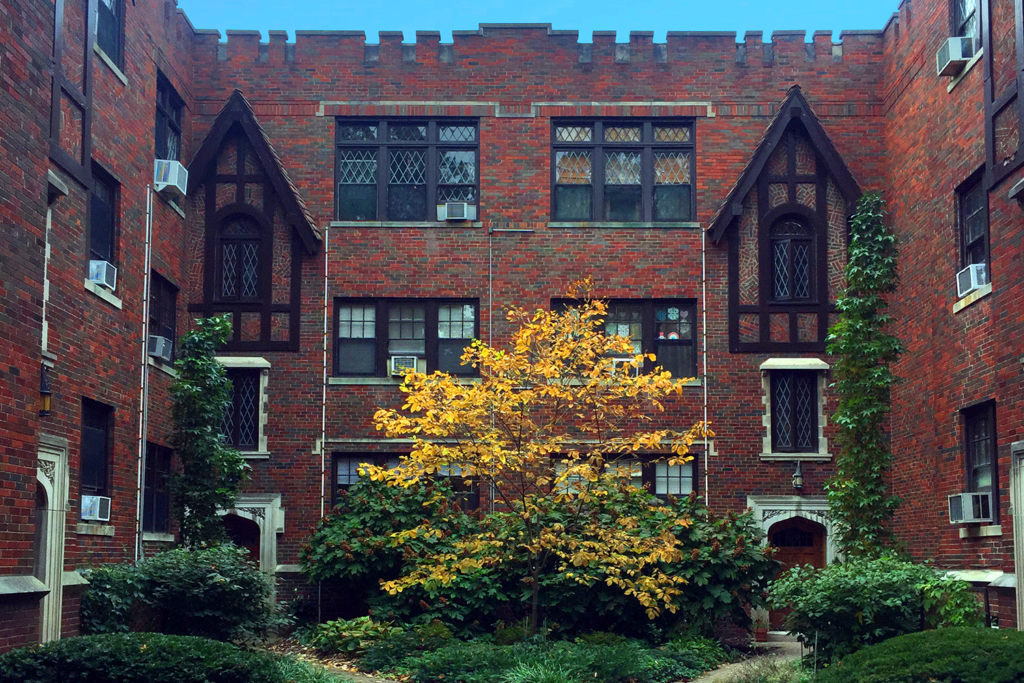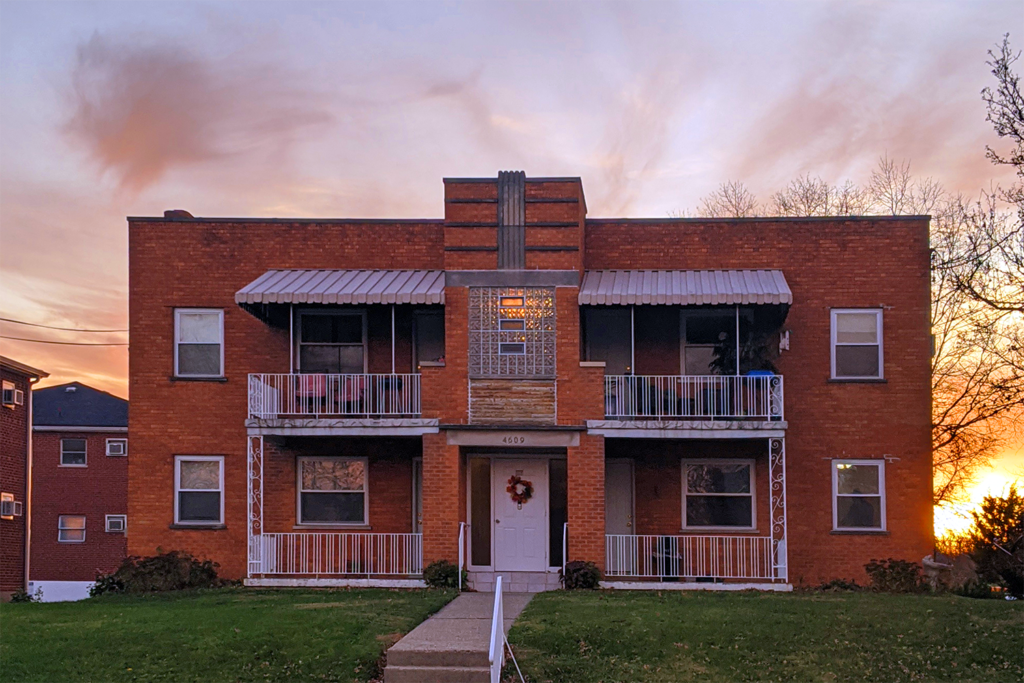by Nick Keeling
All around Cincinnati, you can find multi-family homes that are both historic and beautiful. However, did you know that a majority of these buildings are illegal? Buildings like these cannot be built in their current zoning and only exist due to the grandfather clause. Current zoning in most American cities only permits single-family homes or massive apartment complexes, but nothing in between.

This banned style of housing is often called the “missing middle.” It includes duplexes, triplexes, quadplexes, bungalow courts, courtyard apartments, and many other examples. These homes embrace density and affordability without sacrificing residential characteristics. So, why exactly are they banned?

In the beginning of the 20th century, many cities across the US established zoning to separate land uses. The narrative at the time was that of division between homeowners and renters, often rooted in racial and class discrimination. This can be traced back to the historic supreme court case of Village of Euclid v. Ambler Realty, a dispute between a private company and public jurisdiction, which bolstered zoning ordinances across the country. Initially during the hearings, the lower courts denied zoning through police power due to concerns of government overreach and racial discrimination. However, the Supreme Court would ultimately side with the Village of Euclid, thus upholding zoning.

Following this court decision, jurisdictions across the US followed suit by implementing their own zoning ordinances. This was exacerbated by the rapid suburbanization following World War II, and by zoning resolutions that reflected the suburban lifestyle ethos of single-family homes and segregated communities.

Once cities adopted suburban-style zoning resolutions, they banned all styles of housing that were not single-family homes or large apartment complexes. These “missing middle” homes are symbolic of a time where more housing options were available to all types of people. They were not defined by land use restrictions and naturally followed development trends of the time.

Missing middle housing is commonly found near historic business districts and along arterial roads. Often, they were built by private entities in close proximity to newly opened streetcar lines. The purpose was to provide upward mobility housing access to a growing working class that had previously been confined to tenements. The rapidly growing streetcar suburbs beyond downtown solved housing demand issues by simply constructing more “missing middle” housing. This can be found in almost any streetcar suburb in the US.
As the automobile became more popular, missing middle housing adjusted by adding driveways and garages. In the case of the ubiquitous Art Deco quadplex found all over Cincinnati, parking lots and garages are hidden behind, or sometimes below, the building. This promotes a narrative of acceptance to either the mass transit commuter or the private automobile owner.

By barring missing middle housing, cities artificially inflate the price of land by restricting density, thus intensifying the affordable housing crisis. Across the country, many jurisdictions are updating their zoning ordinances and deregulating residential zoning to permit the “missing middle”… but not the City of Cincinnati. In order to advocate for Cincinnati to permit this style of housing, the Instagram account Legalize Housing was created to shine a light on the historical and current importance of the “missing middle.”
In many cases, once these buildings are gone, they can never be built again. As preservationists, we need to strive to understand and change how zoning impacts housing density and historical integrity of our many neighborhoods.
Nick Keeling is a professional urban planner, performing artist and hobbyist. He contributes to a cooperatively run Instagram account, Legalize Housing, which promotes conversations around missing middle housing in Cincinnati and beyond. He also runs 52bump on Instagram, which combines photos of Cincinnati neighborhoods with music. Nick serves his neighborhood as a board member on the West Price Hill Community Council.
Further reading:
- Missing Middle Housing
- “Missing Middle” at Strong Towns
- It’s Time to End Single-Family Zoning
- Missing Middle Housing
- Great idea: Missing Middle Housing
- The Racial Origins of Zoning in American Cities
Instagram resources: